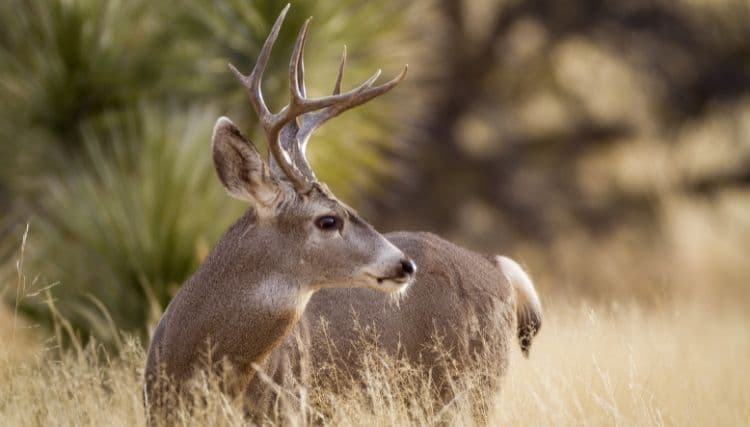
It can be tough to get the information you need about animals. If you’ve ever wanted to know all there is to know about Mule Deer, then this guide is for you.
What is Mule Deer?
Mule deer (Odocoileus hemionus) is a species of deer that are native to western North America. They are named for their large, mule-like ears that are about twice as long as the ears of white-tailed deer, another species of deer that is found in eastern North America.
Mule deer are typically brown or grayish-brown in color, with a white rump patch and a black-tipped tail. They have a distinctive bounding gait, in which all four feet leave the ground at once, and they can jump up to 10 feet in a single bound.
Mule deer are herbivorous and primarily eat plants such as grasses, shrubs, and leaves. They are an important game animal in many parts of their range and are also valued for their meat and hides. However, habitat loss and hunting pressure have led to declines in some populations, and conservation efforts are underway to help protect this iconic species.
Mule Deer Behavior
Mule deer are known for their daily activities, social structure, communication, and interactions with other species.
They are primarily active during the early morning and late evening, with most of their time spent resting and digesting during the day. They are social animals, forming groups based on gender and age, with females and their young forming the largest groups.
Mule deer communicate through a variety of vocalizations, including snorts, grunts, bleats, and scent markings.
What is Mule Deer Size?
Mule deer are a medium to large-sized deer species, with males (bucks) typically being larger than females (does).
Adult male mule deer, on average, stand about 3-3.5 feet (90-105 cm) tall at the shoulder and can weigh between 150-300 pounds (68-136 kg), although some individuals can weigh even more. Female mule deer, on the other hand, is slightly smaller, standing about 2.5-3 feet (75-90 cm) tall at the shoulder and weighing between 90-200 pounds (41-91 kg).
The antlers of male mule deer are another distinctive feature, with a typical rack consisting of two main beams that fork into several points. The size and shape of the antlers can vary depending on factors such as age, nutrition, and genetics, but they can span up to 4 feet (1.2 m) in width and can weigh up to 15 pounds (6.8 kg). Mule deer antlers are shed and regrown annually, with the growth process starting in the spring and the antlers typically being fully developed by late summer or early fall.
Where Are Mule Deer Found?
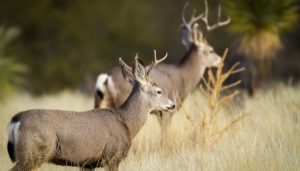
Mule deer are found in western North America, from the western United States to parts of Mexico and southern Canada. They are typically associated with a variety of habitats, including forested areas, sagebrush steppe, and high-elevation alpine environments.
In the United States, mule deer are found in many western states, including Colorado, Wyoming, Montana, Idaho, Utah, Nevada, Arizona, New Mexico, Oregon, Washington, and California. They are also found in several Canadian provinces, including British Columbia, Alberta, Saskatchewan, and Manitoba.
The specific range of mule deer can vary depending on the subspecies. There are several recognized subspecies of mule deer, which are distinguished by differences in physical characteristics and geographic distribution. For example, the Rocky Mountain mule deer subspecies are found in the Rocky Mountain region of the western United States, while the California mule deer subspecies are found in California and parts of Nevada.
Habitat For Mule Deer
Mule deer are adapted to a wide variety of habitats, including forested areas, shrublands, and grasslands. They are also found in high-elevation alpine environments, as well as desert and semi-arid regions.
In general, mule deer prefer habitats with a mix of cover and open spaces, such as forest edges, brushy areas, and grasslands with scattered trees or shrubs. They rely on cover for hiding and shelter, and on open areas for feeding and movement. Mule deer are known for their ability to navigate rough terrain and steep slopes, and they can often be found in areas with rugged topography.
Mule deer are also known to migrate seasonally in response to changes in food availability and weather conditions. In some regions, they migrate long distances between summer and winter ranges, often traveling across multiple habitats and elevations. Maintaining connectivity between different habitats is important for the survival and conservation of mule deer populations.
Reproduction -Breeding
Mule deer breeding season, also known as the rut, occurs in the fall, typically between October and December. During this time, male mule deer, called bucks, will compete with each other for access to females, called does. Bucks will use their antlers to spar with each other and establish dominance.
Once a buck has established dominance, he will seek out receptive does and attempt to mate with them. Does may mate with multiple bucks during the breeding season, and may even store sperm for several months before becoming pregnant.
Mule deer have a gestation period of about 200 days, with most fawns born in the late spring or early summer. Typically, will give birth to one or two fawns at a time. Fawns are born with white spots on their fur, which helps them blend in with their surroundings and avoid predators. They are also able to walk and run within hours of being born.
Mule deer fawns are raised by their mothers and may stay with them for up to a year. During this time, the mother will nurse and care for the fawn, teaching it survival skills such as finding food and avoiding predators. Once the fawn is weaned, it will gradually become more independent and eventually leave its mother to establish its territory.
How Long Does A Mule Deer Live?
The average lifespan of a mule deer is around 10 to 12 years. However, this number can vary depending on the living conditions and their health.
Communication And Perception
Mule deer communicate with each other using a variety of methods, including vocalizations, body language, and scent marking.
Vocalizations: Mule deer are known for their distinctive vocalizations, which include grunts, snorts, and bleats. Bucks will use vocalizations during the rut to assert dominance and attract females, while does may use vocalizations to communicate with their fawns.
Body language: Mule deer also use body language to communicate with each other. For example, bucks may use their antlers to establish dominance, while may use tail flicks and ear movements to signal to their fawns.
Scent marking: Mule deer also use scent marking to communicate with each other. Bucks may rub their antlers on trees or shrubs to deposit scent, while may use their urine or feces to mark their territory.
In terms of perception, mule deer have well-developed senses of sight, smell, and hearing, which they use to navigate their environment and detect potential threats.
Sight: Mule deer have large eyes positioned on the sides of their heads, giving them a wide field of vision. They are also able to see in low light conditions, which is important for their crepuscular and nocturnal activity patterns.
Smell: Mule deer have a highly developed sense of smell, which they use to detect predators and find food. They have a special gland on their head called the preorbital gland, which they use to deposit scent and communicate with other deer.
Hearing: Mule deer have large, movable ears that they use to detect sounds from long distances. They can hear a wide range of frequencies, which helps them detect potential predators and communicate with other deer.
What Does Mule Deer Eat?
Mule deer are herbivores and primarily feed on a variety of plant materials, including leaves, twigs, buds, and grasses. Their diet can vary depending on the season and availability of food in their habitat.
During the summer months, mule deer may feed on various grasses and forbs, such as clover, alfalfa, and dandelion. They may also browse shrubs and trees, including willow, aspen, and serviceberry.
In the fall, mule deer will often feed on the mast, which includes acorns, pine nuts, and other nuts and seeds. They may also feed on fruits and berries, including chokecherry, elderberry, and hawthorn.
During winter, mule deer may rely more heavily on woody browse, such as sagebrush, juniper, and bitterbrush. They can digest tough, fibrous plant materials by fermenting them in their four-chambered stomachs.
Mule deer are known for their ability to adapt to different food sources depending on availability, which allows them to survive in a variety of habitats. However, habitat loss and changes in vegetation due to factors such as climate change and overgrazing can have a significant impact on mule deer populations by reducing the availability of their preferred food sources.
Mule Deer Predators
Mule deer face a variety of predators in their natural habitat, including wolves, coyotes, bears, and mountain lions.
These predators play an important role in keeping mule deer populations in check, but they can also have a significant impact on their numbers.
Wildlife managers often use predator control to manage mule deer populations, but this approach is controversial and has both supporters and critics.
Mule Deer Biology
Mule deer have many unique adaptations that allow them to survive in a variety of environments. These adaptations include their large ears, which help them detect predators, and their hooves, which are designed for climbing steep terrain.
Mule deer also have a complex digestive system that allows them to extract nutrients from tough vegetation.
Mule Deer Anti-predator Adaptations
Mule deer have evolved several anti-predator adaptations that help them avoid or escape from predators. These adaptations include:
-
Speed and agility: Mule deer can run at high speeds, reaching up to 45 miles per hour. They are also able to change direction quickly and jump over obstacles, which helps them escape from predators.
-
Camouflage: Mule deer have a coat that is brownish-gray in color, which helps them blend in with their surroundings and avoid detection by predators.
-
Alertness: Mule deer have large ears that they can rotate to listen to sounds, and they are constantly scanning their surroundings for potential threats.
-
Group living: Mule deer often live in groups, or herds, which allows them to be more vigilant against predators. Herd members will watch out for each other and alert the group if they detect a threat.
-
Flight response: When threatened, mule deer will often run away in a zig-zag pattern to make it more difficult for predators to catch them.
-
Scent marking: Mule deer use scent marking to communicate with other deer and establish their territory. This can help deter predators by signaling that the area is already occupied.
Despite these adaptations, mule deer still face predation from a variety of predators, including coyotes, mountain lions, wolves, and bears.
What is the Mule Deer’s role in the ecosystem?
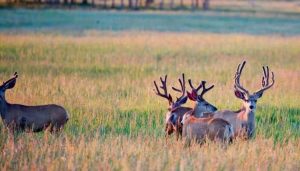
Mule deer play an important role in their ecosystem as both herbivores and prey animals. As herbivores, they help to maintain the balance of plant communities by consuming a variety of plant materials, including grasses, forbs, and woody shrubs. By feeding on plants, mule deer help to shape the structure and composition of plant communities, which in turn can affect the abundance and diversity of other species in the ecosystem.
Mule deer are also an important prey species for a variety of predators, including coyotes, mountain lions, wolves, and bears. Their presence in the ecosystem provides a food source for these predators, which in turn helps to regulate predator populations.
In addition, mule deer are important to humans for recreational and cultural purposes, as they are a popular game species and have been an important part of many indigenous cultures for thousands of years. The presence of healthy populations of mule deer can contribute to the ecological and cultural well-being of local communities.
Mule Deer Conservation
Mule deer populations are facing several threats, including habitat loss, fragmentation, disease, and climate change.
Conservation efforts to protect mule deer include habitat enhancement, population surveys, and the use of genetic tools to monitor populations.
Many organizations are also working to educate the public about the importance of mule deer conservation.
Conservation Status
The conservation status of mule deer varies across their range. In some areas, populations are healthy and stable, while in others, populations have declined due to habitat loss, fragmentation, disease, and other factors. As a result, the conservation status of mule deer is considered to be of “Least Concern” by the International Union for Conservation of Nature (IUCN), but certain subspecies may be considered at greater risk.
In the United States, mule deer are managed by state wildlife agencies, which oversee hunting and other activities that may affect mule deer populations. Some states have implemented conservation measures to protect mule deer, such as habitat restoration, predator control, and restrictions on hunting. However, these measures may not be sufficient to address all of the threats facing mule deer populations.
Overall, continued monitoring and conservation efforts will be necessary to ensure the long-term viability of mule deer populations and their important role in ecosystems and human communities.
Mule Deer Hunting
Mule deer hunting is a popular activity in many parts of North America. Hunting can be an effective tool for managing mule deer populations, but it must be done responsibly and ethically.
Hunting regulations vary by state, and hunters must obtain a license and follow specific guidelines for hunting methods and season dates.
How many Mule Deer are left in the world?
It is difficult to estimate the exact number of mule deer left in the world as population numbers vary across their range and are constantly changing due to factors such as habitat loss, hunting, disease, and climate change. However, it is believed that there are currently millions of mule deer in North America, where they are most abundant.
The specific population numbers of mule deer are tracked by various wildlife management agencies at the state and provincial levels, but there is no comprehensive global population estimate for the species. Additionally, mule deer populations can fluctuate significantly from year to year due to changes in food availability, weather patterns, and predation pressure.
Mule Deer Management
Wildlife managers use a variety of strategies to monitor and control mule deer populations. Population surveys, habitat enhancement, and predator control are all important tools for managing mule deer populations.
Wildlife managers also work closely with hunters and other stakeholders to ensure that mule deer populations are healthy and sustainable.
In conclusion, mule deer are a unique and fascinating species that play an essential role in North American ecosystems.
By understanding their behavior, predators, conservation, hunting, biology, and management, we can work to ensure that mule deer populations thrive for generations to come.
Referans: National Wildlife Federation
What is unique about a mule deer?
The size of mule deer is also an important physical feature because the largest mule deer can weigh up to 200 pounds. Another unique characteristic about mule deers is the long, protruding snout which has many sensory organs like nostrils, ears, and eyes.
What is mule deer’s favorite food?
Mule deer are herbivores and they feed on plants. They prefer to eat blue grama and alfalfa, but will also consume forbs such as cactus, larkspur, fireweed, goldenrod, and thistle.
What is a group of mule deer called?
The most important thing for a group of mule deer to do is to stay together and raise their young. A group of mule deer is called a herd.
Where do Mule Deer sleep?
Mule deer are known for their unique sleeping habits. They sleep in a “nest” made of soft dried grasses, hay, and leaves.
What plants do Mule Deer avoid?
Mule deer are known to be very cautious, and it is said that they avoid plants that have a strong smell.
Can Mule Deer swim?
Mule deer are born with the ability to swim but they do not often use it, preferring instead to stay near water sources.
How high can Mule Deer jump?
Mule Deer are one of the North American deer species that have been known to jump up to 6.4 feet in a single bound. This is due to their ability to extend the tendons in their back legs to aid with jumping and leaping.
Are Our Mule Deer aggressive?
Mule deer are often described as being aggressive and territorial. However, they are not the only animals that can be aggressive to humans.

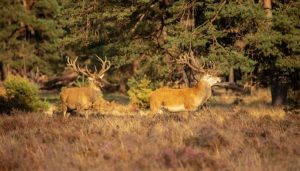
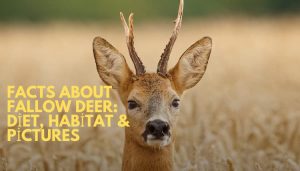
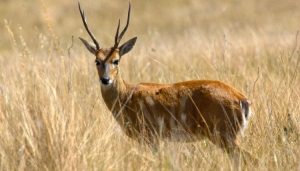
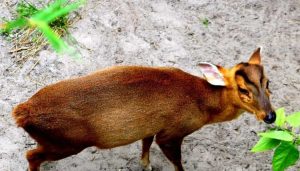
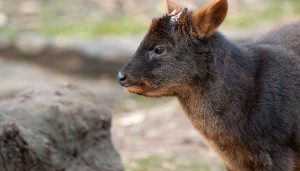
Leave a Reply